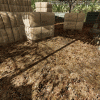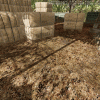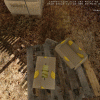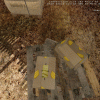my stuffWhich game was causing the 30% drop if you don't mind my asking?
the thing about SSAO its about the most expensive operation u can do
u need depth values + ideally the normal values. ok no probs there but then u have to heaps of sample of these values, and then afterwards u have to do a couple blur passes. == a large drop in performance (+ if u want better quality like the nviodia pdf below youve gotta jump though a lot more hoops, halving your fps perhaps)
I havent played crysis (+ couldnt find with a google any benchmarks with SSAO on/off compared)
but did find this
http://bbs.pczilla.net/viewthread.php?action=printable&tid=4517
interesting the reiterate my experiences
Our only other thought on the matter is the whether SSAO is worth the performance hit if these numbers are correct. AMD’s press shot is one of the best case scenarios for the use of SSAO, and in the game it’s very hard to notice. For a 35% drop in performance, it’s hard to justify the slightly improved visuals.
also see nvidia pdf here
http://developer.nvidia.com/object/siggraph-2009.html






